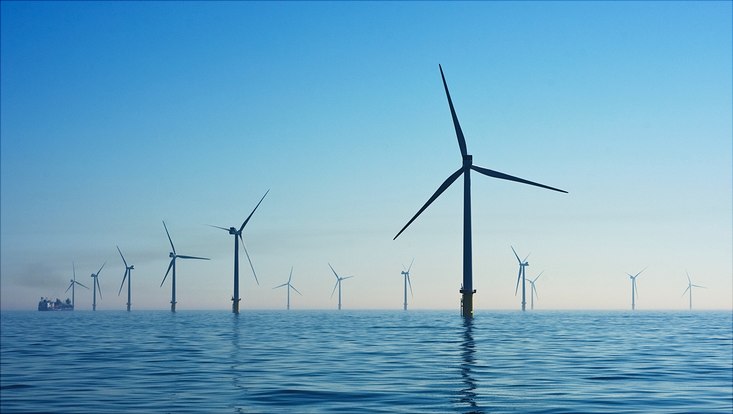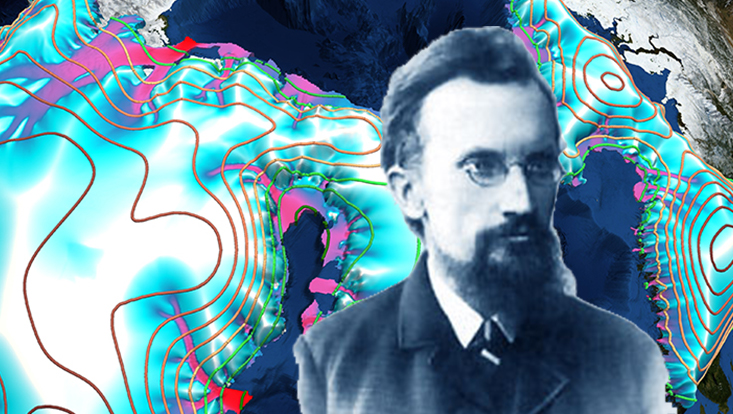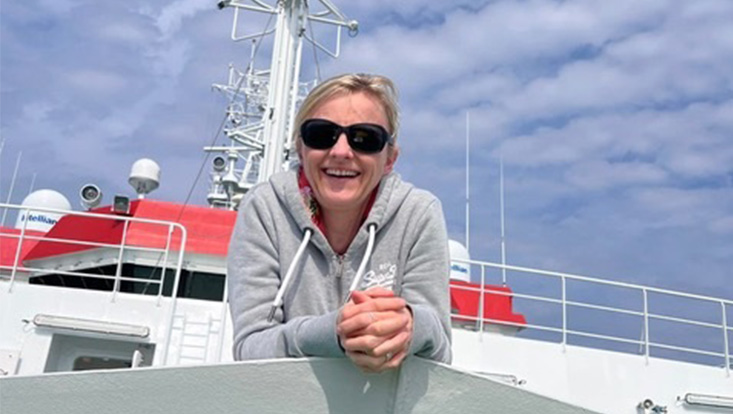IPCC Assessment Report – Part ThreeClimate Protection Pays Off
4 April 2022, by Ute Kreis

Photo: Unsplash/ Nicholas Doherty
Today the third and final part of the IPCC’s 6th Assessment Report will be released. Hermann Held, Chair of Sustainability and Global Change at Universität Hamburg, is a member of the international team of Review Editors and answers our questions below.
Professor Held, the third part of the Assessment Report will be released today. What’s it all about?
This part assesses the available options for mitigating anthropogenic climate change. Where and how can greenhouse gases be avoided? How quickly can and must we take action in order to meet specific climate targets like 1.5 or 2 degrees of warming? But also: how much will climate protection cost us, and what aspects do we need to keep in mind? After the scientific fundamentals in the first part and the impacts and adaptation options in the second, this third part is indispensable in terms of seriously addressing the problem at its root.
What’s in it that we didn’t already know?
One particularly interesting aspect is that this time, a given country’s emissions are also linked to its quality of life. In the past, the more resources that were invested and implemented, the more prosperity improved. Is a society automatically more prosperous because it pumps more greenhouse gases into the atmosphere?
This notion has been engrained in our collective memory. As a result, western civilization has become the standard – with corresponding impacts on the global climate. But new studies show that this isn’t necessarily true: there are a number of countries that have achieved the same quality of life with far lower emissions. That’s an important observation and grounds for optimism.
So, we need to change our lifestyle? What about the technological solutions that many people dream of, because then we might not have to make any changes?
By actively changing the demand, we could produce a palpable and underestimated effect. But new technologies and modified infrastructures are important, too: if we’re looking for financially feasible ways of reducing CO2 emissions, we have to push for more electrification – in heating, in transport and mobility, but also in industry. The reason: electrical power is the easiest form of production to “decarbonize”, that is, to separate from energy sources like coal, oil and gas. In addition, from now on, no coal-fired power stations should be operated without sequestering the carbon dioxide they release underground.
Another new point is that we will definitely need negative emissions in order to meet the climate targets set in Paris. Emitting less CO2 won’t be enough; we’ll also have to actively remove the greenhouse gas from the air. Though there are a number of different options, nearly all of them involve pumping carbon dioxide underground. But many consider this to be a high-risk technology. Past efforts to achieve reductions in other ways simply weren’t enough. And the clock is ticking.
You already hinted at the topic: what’s this going to cost us?
There’s been a great deal of research on that question and we can now deliver more reliable estimates: to keep global warming under the 2-degree limit, in 2050 we’ll need to invest between 1.3 and 2.7 percent of the gross world product. Keeping it under the 1.5-degree limit would cost between 2.6 and 4.2 percent. Experience shows that this has a nearly one-to-one effect on loss of income and consumption. As such, it would be interesting to know how the public feels about these numbers.
One thing that’s important to know: taking these measures also means avoiding tremendously expensive losses – from extreme weather events, failed crops or serious damage to infrastructure. If you compare the two sides of the balance sheet, you can see: achieving the 2-degree target also pays off from an economic standpoint.
That’s an important message. What else can decision-makers in politics and business learn from the report?
Where we need to invest in order to achieve a great deal with limited resources. In other words, how to optimally reduce greenhouse gases. Here, especially agriculture and forestry management hold considerable potential. Transport and electricity are also very promising areas, as is more efficient energy use. In this regard, the demand varies widely from country to country.
What about other important topics like biodiversity, food and health?
If everything has to take a backseat to climate protection and we don’t use forward-thinking planning, it can actually be counterproductive for nature and the environment – for instance, because scarce plots of land are used for renewable energies, which means they’re no longer available for planting food crops or preserving biodiversity. Sustainable climate protection also considers goals like clean water, combating hunger, and preserving biodiversity from the outset. In this regard, the new report highlights interrelations that were largely overlooked in the past. By the way, these also include positive interrelations: for example, switching to more plant-based foods produces fewer emissions and can simultaneously be a healthy choice. And low-emissions technologies can help keep the air clean and reduce healthcare costs in the process.
The IPCC (Intergovernmental Panel on Climate Change) Assessment Reports were introduced in 1988 by the United Nations Environment Programme and the World Meteorological Organization. The goal was and is to summarize the current state of research for political decision-makers – regarding the scientific basis of climate change (Part 1), its impacts and adaptation strategies (Part 2), and mitigation strategies (Part 3).
For this purpose, the IPCC relies on ca. 1,000 researchers from around the globe. To date, six Assessment Reports and more than ten thematically focused Special Reports have been released. The IPCC Reports are considered the “gold standard” for climate research, the most credible and reliable source of information on climate change and our options for addressing it.
Hermann Held is professor of Sustainability and Global Change at Universität Hamburg. The physicist and expert on interdisciplinary environmental research is also a co-director of the Research Center “Sustainability and Climate Risks”. He was one of the Review Editors for the third part of the latest Assessment Report, esp. for Chapter 17, which focuses on an accelerated transformation and on interactions with other sustainability targets.
Contact
Ute Kreis
Press/Öffentlichkeitsarbeit, Center for Earth System Research and Sustainability (CEN)
Tel.: +49 40 42838-4523, ute.kreis"AT"uni-hamburg.de
Prof. Dr. Hermann Held
Tel: +49 40 42838 7007, hermann.held"AT"uni-hamburg.de
More News
Eating healthy protects biodiversity - Dr Livia Rasche from the CLICCS Cluster of Excellence at the University of Hamburg now shows in a study that this could stop the loss of biodiversity.


